How much does it cost to advertise on Facebook?
How much should I spend on CPC Facebook Ads?
These are the two questions that I hear the most when I talk to marketers who are thinking about running their first Facebook Ad campaign. And so it should be. Marketers need to be able to estimate their ROI above anything else.
Here’s the answer: Spend less on each customer you get through Facebook Ads than they are worth to you.
But how do you know much an average customer is worth? And how do you know if you’re spending less than that on your Facebook Ads?
Let me explain.
Facebook Advertising Costs Principle #1: CPC, CPM, CPE, CPA & Cost-Per-Customer of Your Target Audience
Ok, first, let’s take a look at how Facebook charges you to advertise on their platform and the factors that affect how much your Facebook Ads cost.
CPC, CPM, CPE & CPA Explained
When you set up your Facebook campaign budget, you need to choose between two to four pricing options.
In order to understand the cost of Facebook Ads, and how these Facebook Ads costs work, you need to understand the different factors that you pay for in your campaigns. These are:
CPC (cost-per-click): If you use cost-per-click (CPC) pricing, you only pay when someone clicks on your Facebook Ad. Basically, with cost-per-click, you set a budget, and each time someone clicks on your ad, you pay the specific cost-per-click.
CPM (cost-per-mille): With cost-per-impression (CPM), you pay when Facebook shows your ad 1000 times. Impressions are the number of times your ad is shown to a user on Facebook. This means your Facebook ad spend is based on the number of times someone sees your Facebook ad and not the number of clicks on that Facebook ad.
CPA (cost-per-action): This allows you to track and optimize how much you spend to get someone to take an action (or convert) on your website after clicking your ad. CPA on Facebook ads is more specific, and it gives you a better overview of how well your Facebook ads are performing in terms of creating customers.
CPE (cost-per-engagement): This allows you to track and optimize how much you spend to get someone to engage with your Facebook Page after clicking your ad. In 2021, the average CPE is $0.11. Learn more about how to increase Facebook Likes using Facebook Ads.
Calculating your Cost-Per-Customer
Cost-Per-Customer is the one number you need to watch. This is the cost of getting one person to buy from you from your Facebook ad. All of the other cost numbers are just parts of the equation for calculating your final cost of getting one new customer.
Here’s how to calculate it:
Using Facebook’s built-in CPA tracking, we can first get the cost of the initial action the user takes on our website. If that action is to make a purchase, then your CPA is equal to your Cost-Per-Customer. But if your action is to download an ebook, sign up for a newsletter, or some other form of lead generation, then you need to add one extra variable to the equation:
CPA x (Number of Leads that Buy / Total Number of Leads)
What is the Average CPC?
In 2021, the average CPC across campaign objectives and industries is $0.97. If you break the Facebook ads average CPC down into campaign objectives, the CPC average ranges from $0.25 to $3.30.
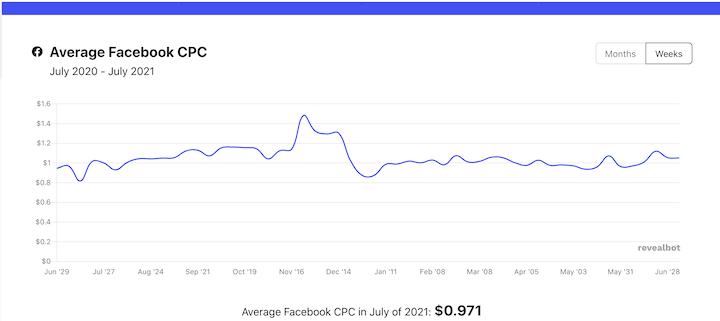
What is the Average CPM?
Right now, the average CPM for a Facebook Ad campaign across all industries is $11.54. If you break down the Facebook Ads CPM by campaign, the averages range from $2.00 to $30.97.
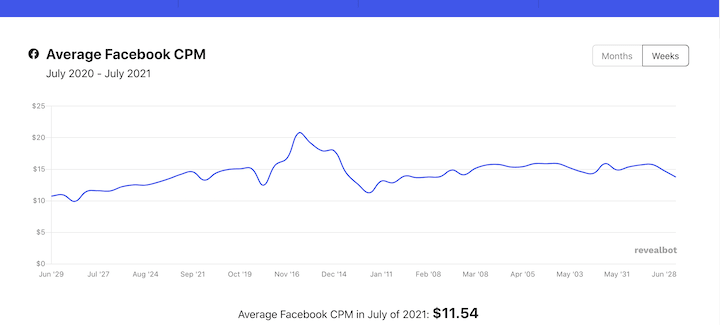
CPC vs CPM Facebook: Which One to Choose?
The default pricing option that Facebook sets for your ad is a cost-per-click (CPC) bid. This is a good option for when you’re first starting out, as the click-through rate (CTR) for Facebook Ads is lower and paying for clicks is ultimately cheaper than if you were to pay for the same number of impressions (CPM).
Depending on your ad’s performance, you may want to switch your Facebook bid from cost-per-click (CPC) to CPM – especially if it’s doing well with a high click-through rate. But be sure to monitor impressions and clicks. If impressions on your ad increase and clicks decrease, your cost will increase and you may need to switch back to cost-per-click (CPC) pricing.
After choosing your payment method, you can choose to set your own bid or allow Facebook to optimize your bid for you. Unless you’re an advanced user, we recommend allowing Facebook to optimize your bid.
Choosing a Target Audience for Your Ads
Your Target Audience is the group of Facebook users who will potentially see your ad. Facebook has a very deep knowledge of users’ demographics, employment, and interest information for very precise targeting. His accurate targeting of your exact audience is a major advantage to running Facebook Ad campaigns.
Want to target 45-year old women in Kansas City who like cats? No problem! You can even target specific individuals with your Facebook Ads using only their email address or phone number. This is called “Custom Audience” targeting. Learn how to target Facebook Ads based on their email address and phone number (custom audience) here.
If you’re interested in learning how to create a target audience, check out this helpful guide.
Why Some Target Audiences Have Higher CPM and CPC
In a nutshell, the more advertisers there are for a particular target audience, the higher the cost will be to advertise to them – basic supply and demand.
If you’ve ever run Google Ads, you’ve experienced the same thing. The more people try to advertise for a particular search keyword, the more it costs to advertise for it. This is because people bid on the Facebook CPC to make sure that their ad gets more visibility. With a larger ad spend, you’ll be able to reach more people.
What Influences the Cost of Facebook Ads?
There is a number of variables that influence the cost of Facebook ads. It’s important to understand these variables before running your next campaign.
- Campaign objectives: Facebook campaign objectives make a big difference to the price of ads. For example, brand awareness or engagement campaigns cost less than conversion campaigns at the lower end of the funnel.
- Audience size: If you target larger audiences you’ll generally pay less than ads targeting smaller audiences.
- Daily budget: If your daily budget is too low, it will take Facebook longer to end the learning phase. Basically, ads that have better engagement rates are rewarded with lower costs in the long run.
- Click-through rate: The higher the click-through rate, the lower the cost per click will be.
- Seasonality: As the holiday eCommerce season takes place, the cost for advertising sees a gradual rise. Generally, Q1 and Q2 are cheaper periods to run ads, while the latter parts of Q3 and Q4 see ad prices increase.
Facebook Advertising Costs Principle #2: Your Average Value Per Customer
Now that you understand how Facebook Ads are priced, you need to look at the other side of the equation, which is how to calculate how much value (revenue) your ads generate for you.
The best way to do this is to calculate your average value per customer, so you can easily match up against the Cost-Per-Customer that we calculated above.
Calculating your Average Value Per Customer (AVC)
AVC is the average order amount of each customer.
If you have a one-time payment business model, meaning someone pays you a one-time fee for each product or service, this is the equation you use to calculate the average order amount:
Total Sales Revenue / Number of Customers
Now, if you’re a larger business and have multiple product categories, you may need to create segments based on those categories. For example, the average order amount of electronics will be much higher than that of cleaning supplies.
Calculating AVC for Recurring Revenue Models
If you have a recurring revenue model, meaning people pay you on a weekly/monthly basis for a product or service, this is the equation you use to calculate the average order amount:
(Total number of recurring payments/number of customers) x ((Recurring Payment Price #1 x Number of Customers Paying this Price) + (Recurring Payment Price #2 x Number of Customers Paying this Price) + … / Total Number of Customers)
In the next section, I’ll show you the one number you need to watch to know if your Facebook Ads are successful or not.
Facebook Advertising Costs Principle #3: Optimizing Your Ad Spend (Budget)
So, now that you know how to analyze your Facebook Ads to make sure they are making you more money than you are spending on them (a.k.a. profitable), how much do you spend each week/month on Facebook Ads? And how do you optimize your Facebook Ads to make them as profitable as possible?
Understanding Return On Ad Spend (ROAS)
The one number that you need to be focused on at all times is your average-value-per-customer minus Cost-Per-Customer. This is, how much money your average customer brings you minus the amount you need to spend on ads to get one customer. This is referred to as your return on ad spend (ROAS).
If this number is above zero then your ads are profitable. And the higher the number, the more profitable they are.
At the end of the day, every other number is just a vanity or incomplete metric. This is the only one that truly affects the bottom line of your business.
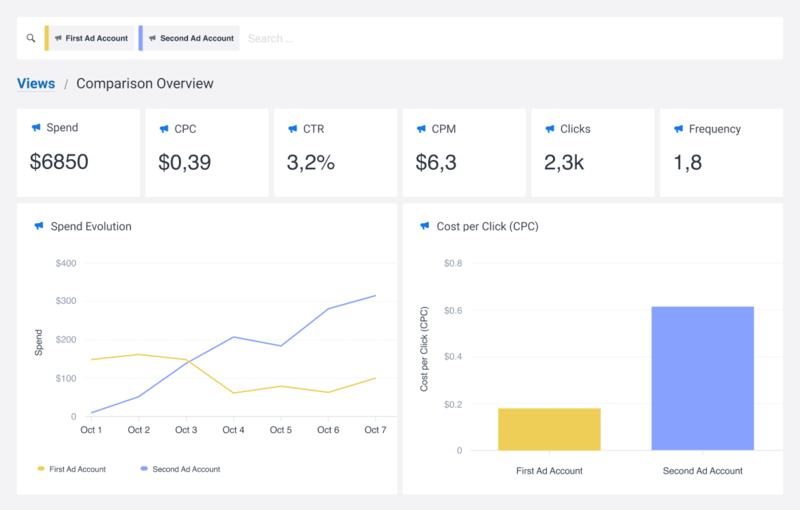
3 Ways to Lower Your Facebook Ad Costs
An important part of marketing is getting the best possible return on investment with each campaign. Here are the top three ways to optimize your ads and budget costs with each Facebook Ad.
1. Optimize Your Facebook Ads Using A/B Split Testing
While there are a number of best practices on how to advertise on Facebook, the only way to optimize your Facebook Ads to maximize their ROI is to test, test, test. Specifically, A/B split test.
A/B testing is a strategy in marketing in which two versions, A and B, (the Control and the Treatment) are tested against each other. The goal is to identify changes that increase the chance of what you want to occur, occurring.
It’s used commonly for web pages, landing pages, marketing emails, and advertising. The best practices remain essentially the same across the board though:
- Change the placement and formatting of objects on a page to get a user’s eye to where you want it
- Change colors to ensure primary objects stand out
- Change images to be eye-catching or elicit emotion: encourage engagement
- Change text to be appealing to the reader, and encourage the desired outcome
- Change your CTA to see what generates the most link clicks
Want to know more? Click to learn How to A/B Split Test your Facebook Ads to Maximize ROI.
2. Create a Full-Funnel Strategy
If you want to make the most of your Facebook Ad budget, then you’ll need to run campaigns that align with your marketing funnel. This means choosing objectives for each ad campaign that match the different stages of your funnel.
For example, you should run campaigns that generate brand awareness at the top of the funnel, consideration/conversion campaigns at the middle of the funnel, and conversion campaigns at the end of the funnel.
Basically, you want to start with awareness campaigns that reach a larger target audience at the top of your funnel, and then move this toward more targeted conversion campaigns.
Most people won’t make a purchase or engage with a brand on Facebook after their first ad encounter. By running ads that are more aligned to your marketing funnel, you’ll see a much better success rate and return on investment. Basically, you’ll spend less on your top-of-funnel ads, and waste less marketing dollars on your conversion ads.
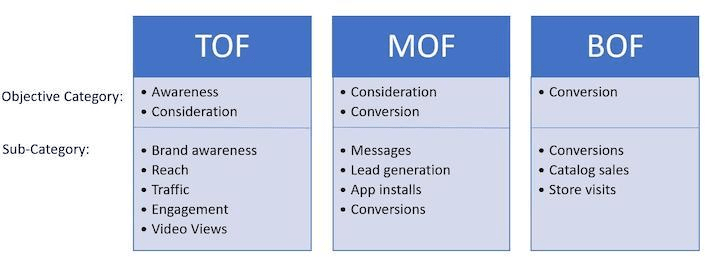
3. Use the Automatic Placements Setting
Instead of choosing where you want your ads to appear across the Facebook network, using the default Automatic Placements setting is a great way to save money. Placing your ads on all placements helps Facebook to understand where to best position your ads, which lowers your online advertising costs.
Your targeting requirements stay the same, but Facebook optimizes your ad placements for better results. This is a data-backed strategy that allows you to run better campaigns, faster.
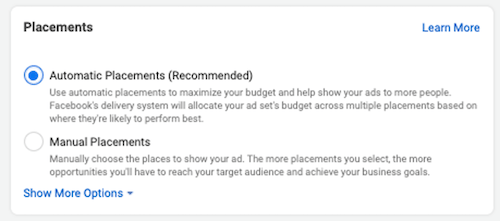
Don’t Fall Victim to Facebook Ad Fatigue
Facebook Ad Fatigue occurs when your ad’s target audience is shown your ad too many times and your Click-Through-Rate drops as your frequency rate (how many times it’s seen) increase.
Why this happens: Users are shown your advertisement frequently – every time they sign into Facebook (on average 13.8 times/day). Your ad is competing against photos and statuses on Facebook users’ News Feeds. People become inured to your advertisement and your Click-Through-Rate (CTR) drops.
Rotating the variables within your ads (Ad Rotation) stops Facebook users from becoming Ad Fatigued. Ideally, as soon as your ad starts losing efficacy it gets rotated out and replaced with a different version.
Learn more about Facebook Ad Fatigue and how to combat it.
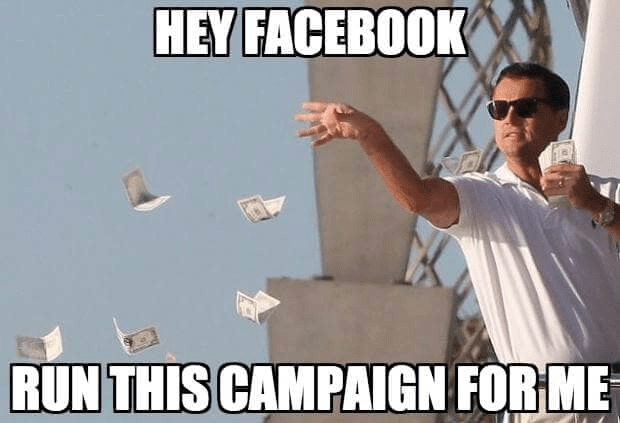
Does Facebook Optimize My Ad Spend for Me?
Yes – Facebook does optimize your target audience for you, based on who is clicking or converting on your ad. But, to be honest, the optimization they do is fairly minimal. Using the above techniques optimize your ads far better than Facebook will.
What is CTR and How Does it Affect Facebook Advertising Costs?
CTR (Click-Through-Rate): This is the percentage of people who click on your ad divided by the total number of people who saw your ad. For example, if 100 people see your ad and only 1 of them clicks on it, your CTR is 1%.
Unlike Google Ads, Facebook does not have any documented Quality Score. For Google Ads, your Ad’s Quality Score is affected by your click-through rate and long-click-rate (number of people who stay on a website after clicking on an ad for it). Unfortunately, this is not the case yet for Facebook Ads.
P.S. Need help creating engaging social media campaigns? Wishpond’s Facebook Contest Apps make it easy to create sweepstakes, photo contests, Instagram hashtag contests & more. If you’re looking for inspiration, check out our post Facebook Contest Ideas.
More Free Resources on Facebook Advertising:
Conclusion
Facebook advertising is an excellent way to reach a far larger audience on social media, target very specific users, improve your lead generation campaigns, and grow your social media marketing. Of course, effective Facebook Ad campaigns require advertisers to spend their campaign budgets carefully.
Understanding cost-per-click (CPC) on Facebook is only the first step. Beyond CPC on Facebook, there are many other important metrics to consider (like your ROAS) to help you understand just how worthwhile your Facebook Ad campaigns are.
Keep this guide in mind the next time you run a Facebook campaign, and you should be able to do more for your campaigns with your marketing budget.
Source by blog.wishpond.com



